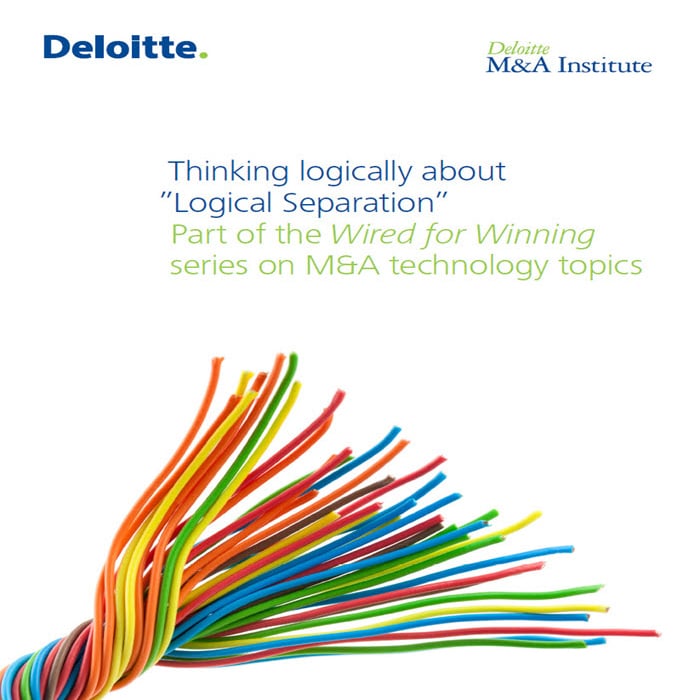Perspectives

M&A technology insights
The Wired for Winning series
Information technology is a critical enabler of virtually every operating element in contemporary organizations, and timely access to information is unquestionably of paramount importance. The ability to keep one’s company “on the rails” while simultaneously executing a complex merger, acquisition, or divestiture is a skill which should be part of every contemporary CIO’s repertoire. This series of articles provide guidance on a broad set of M&A technology issues—from due diligence, to planning, execution, and post-transaction integration activities—bucketed into three overarching categories: applications; infrastructure; and operating model.
Explore Content
Featured perspective
Thinking logically about ”logical separation”
During a carve-out, asset sale or spin-off, there is often insufficient time or readiness to fully separate the Information Technology (IT) infrastructure—systems, applications, and/or co-mingled data on a server or in a database—by deal close.
As a result, an increasing number of M&A deals include Transition Service Agreements (TSAs), a short-term arrangement in which the seller continues to provide services to the buyer.
Based on our experience, each provider of TSA services needs to thoughtfully (but quickly) set IT-related guidelines that are based on a holistic review of deal terms and the combined risk posture of the two organizations. Following the standardized approach, and recommended do's and don'ts, detailed in this article can help determine the level of necessary separation.
Applications
- Thinking logically about "logical separation"
Logical separation is becoming increasingly relevant in an M&A context and should be a front-burner issue for IT executives. When an asset sale or spin-off involves an IT services TSA, appropriate tools and restrictions should be put in place to both enable day-to-day operations and prohibit unauthorized access. Learn the details behind the “logical separation” approach. - Look to the future when separating historical data
The abundance, prevalence, and diversity of historical data speak to its organizational value. However, these same factors also add to the complexity of separating, retaining, retrieving, and accounting for historical data during and after an M&A transaction. Learn how developing and using simple and cost-effective solutions, using the appropriate tools and governance structure, and collaborating with stakeholders can make the pain of managing historical data be a thing of the past.
- Standardize, streamline, simplify: Applications rationalization during M&A
An application rationalization program can help to achieve synergies and reduce costs by standardizing, streamlining, and simplifying a company’s portfolio after an integration or separation. Explore leading practices to improve the success of an M&A-driven application rationalization program.
- More coming soon!

Infrastructure
- Infrastructure services delivery planning during M&A: An ounce of prevention
Understanding how your current delivery model should adapt to absorb additional demand stemming from M&A activities is critical to a successful Day 1 transition. Learn how you can smooth the road to IT separation and integration and position yourself for Day 1 success. - More coming soon!

Operating model
- M&A-driven technology contract separation: A strategic approach
Contract separation is a critical part of an M&A carve-out transaction, be it a divestiture, asset sale, or spin-off, and IT contracts are among the largest, most costly, and most complex contracts to separate. Learn how you can execute an effective and strategic technology contract separation using an approach that frames the separation as a business event rather than a negotiation. - Estimating and managing IT costs during M&A events
One of the major tasks that company leaders typically assign to IT executives during an M&A event is to provide an estimate for one-time IT costs resulting from the transaction, but several factors can place considerable pressure on IT executives to get an M&A-related one-time cost estimate right. Learn about accurately and effectively managing M&A-related IT costs. - More coming soon!

